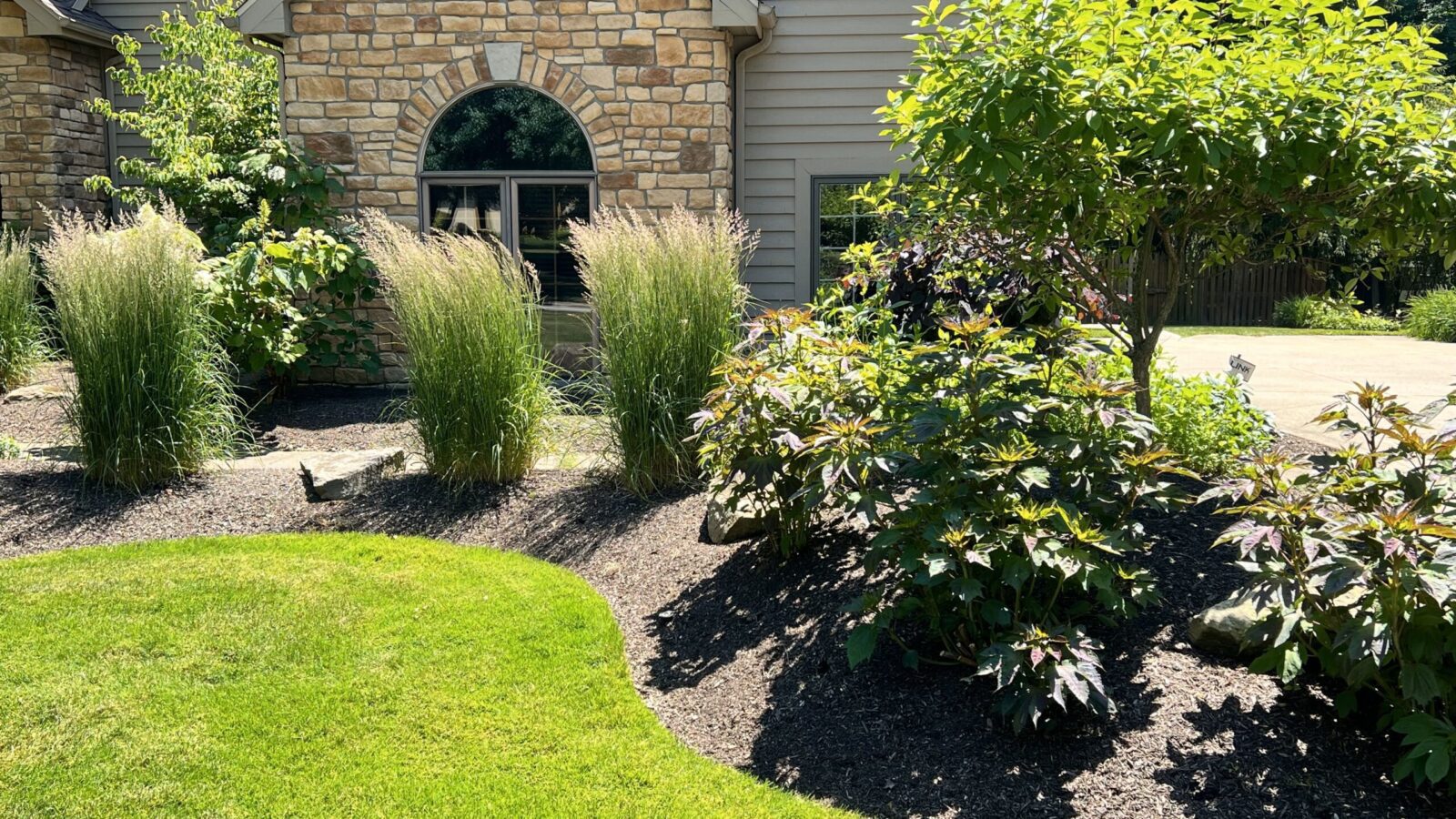More than just a garden covering
Mulch is an ambiguous term in the world of gardening. So much so, the purpose gets misconstrued unless a well-defined objective is identified. Mulch is a noun, a verb, and to some a specifically defined verb. “I’m going to mulch up the leaves in the backyard, then buy mulch, and mulch the garden beds” can be a true statement whether you’re an English major or not.
Regardless of how you define mulch, let’s talk about what exactly professional landscapers put in your backyard every year to spruce the place up. In this article we’re going to cover in plain terms:
- What is mulch?
- Is it necessary for gardens?
- What are the benefits, if any?
- Should I be mulching my yard?
What is mulch exactly?
Generally, mulch is an organic compound derived from natural resources such as yard waste and harvested trees. It’s often processed at a facility to create wood chips, then processed again to obtain that fine velvety texture homeowners have grown to know and love.
For others, mulch may be rocks or a rubber compound. Many farmers consider mulch in the form of plastic sheathing over the soil.
Some of these mulches may be colored by natural ingredients, while others are dyed by synthetic means to give them the darker hues so often sought after.
Whatever your definition, the best part of mulch installation is always when your local landscaper buys it in bulk and delivers it to your home or business.
The Spring rush: why mulch matters in Northeast Ohio
For a professional landscaper who installs mulch, at least for us here in the Chagrin Valley, the demand is enormous in the spring and accounts for almost 15% of our workload every year, with exterior design and outdoor living space construction leading the way.
We know the question on everyone’s mind: do landscaping companies push mulch installation too hard? Do you even need mulch, and do you need it every year?
So, here’s the truth: annual mulching is an integral part of the process. For those who know us at Carmel Landscapes, you’re familiar with our dedication to naturalizing areas and designing landscapes that are sustainable.
Natural vs. landscaped environments
Wait a second… clearly natural areas such as all the parks local to the Chagrin Valley don’t get mulched by landscapers. The trees in the woods are healthier than any tree that lines Gates Mills Blvd.
If mulch is so important and defined as a protective layer that enriches the soil around a plant, then how do the forests do so well without it?
Naturally occurring plants germinate because all the right conditions are met, creating the perfect environment for the plant to thrive without human intervention. This environment is complemented by the ecosystem that was present prior to the plant’s germination and sustains its health.
Your manicured flower beds and gardens on the other hand…
Why your garden beds need mulch
Plants that were hand-selected for your backyard landscape beds usually have a series of obstacles to overcome. One of the most detrimental hurdles is the initial plant shock—some professionals use the phrase “weep, creep, and leap” to describe this, but we can go into those details in another blog.
Think of it this way: the plant was just shipped from a nursery to its planting site and is now given the sudden, difficult task of acclimating to its new home. This takes an enormous toll on the plant, and without the correct conditions, the plant will struggle.
The benefits of mulching your garden
By mulching backyards of plants that aren’t naturally occurring, over time you will:
- Enrich the soil as the mulch decomposes
- Protect bare soil from dying
- Provide beneficial bacteria plants need to thrive
- Create aesthetic appeal with contrasting colors against your home and plants
- Suppress weed growth and reduce maintenance needs
- Regulate soil temperature throughout seasonal changes
- Conserve soil moisture during dry periods
So, the case for mulch is looking positive.
For starters, it provides nutrients as it breaks down and protects soil from drying up and dying. Another reason we may be asked to mulch is for the appeal, well-laid mulch of triple ground texture certainly gives your backyard landscape a boost in appearance. The contrasts between the deep hues of brown and pitch black against pastel color houses, green foliage, and brighter barks of trees is quite a show.
The other side: potential drawbacks of mulching
So how could an argument be made for the negative aspects of mulching if all we have talked about are extreme benefits of mulch? Let’s dive into some adverse impacts mulch may have on a landscape.
Considerations before mulching
- Type matters: The type of mulch will influence the soil over time. Aesthetically, a triple ground root mulch looks most appealing but provides very little allelopathic reactions. A pine nugget or true hardwood mulch will provide better allelopathic properties but laying it is cumbersome, and it never comes out looking like that velvet blanket if that’s your cup of tea.
- Nutrient competition: Mulch, as it decomposes, sucks up all the nutrients in the top few inches of soil, so planting annuals or smaller seedlings in freshly laid mulch proves to be futile.
- Structural damage: This theme of nutrient-hogging decay process leads us to things around mulch that may be affected, specifically wood structures. Posts, trim, siding, and even root flares will begin to deteriorate over time since the mulch built up against the wood holds moisture and creates the fungi growth that starts and replicates the decay process from mulch to sound wood.
With all that being said, it doesn’t mean you should skip mulching all together.
Spring mulching tips from Carmel Landscapes
- Proper depth: Apply mulch 1-2 inches deep; any deeper can suffocate plant flares over time
- Keep it away: Maintain at least 3-6 inches of space between mulch and woody stems or tree trunks
- Timing matters: Wait until mid-spring when soil has warmed before applying fresh mulch…for the critters
- Refresh, don’t replace: Often, you only need to refresh the top layer rather than completely replacing all mulch
- Consider before planting: annual plantings and wild seeds, etc.
- Edge professionally: A clean, professional edge makes your mulch installation look polished and intentional
Our approach at Carmel Landscapes
We as landscapers love gardens. It’s what we know best. We are going to recommend mulch for the positive reasons, and as professional mulch installers, we mitigate the adverse effects. It’s our priority to deliver positive solutions to our clients through knowledge of mulch specific to unique needs and through precise application.
Carmel Landscapes ensures that your yard not only looks beautiful but also receives the proper care it needs to promote healthy plant growth throughout the seasons.
Carmel Landscapes specializes in high-end landscape design, hardscaping, with a focus on eco-friendly outdoor living spaces in Northeast Ohio. Get in touch with us today to discuss your spring mulching project and how we can help create a sustainable, beautiful landscape that grows with you.

